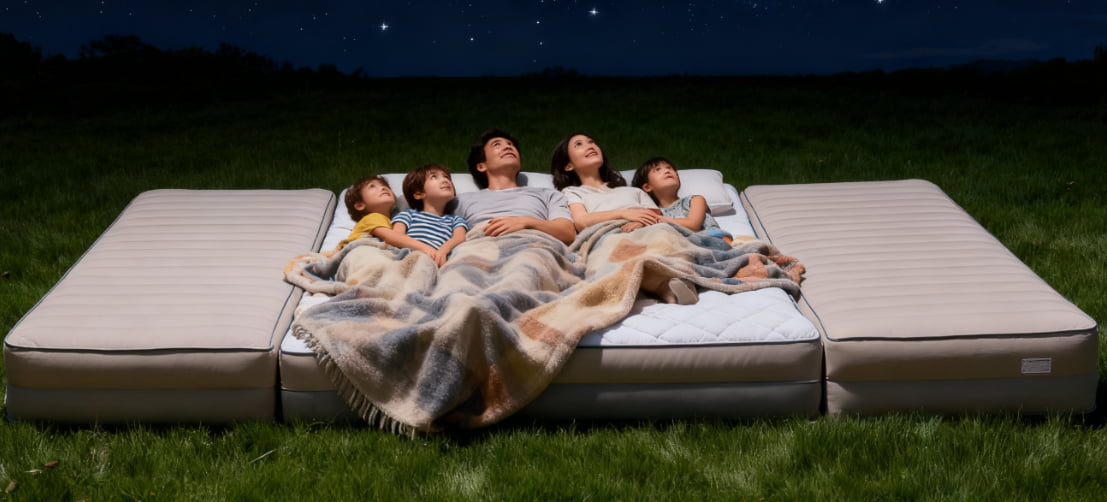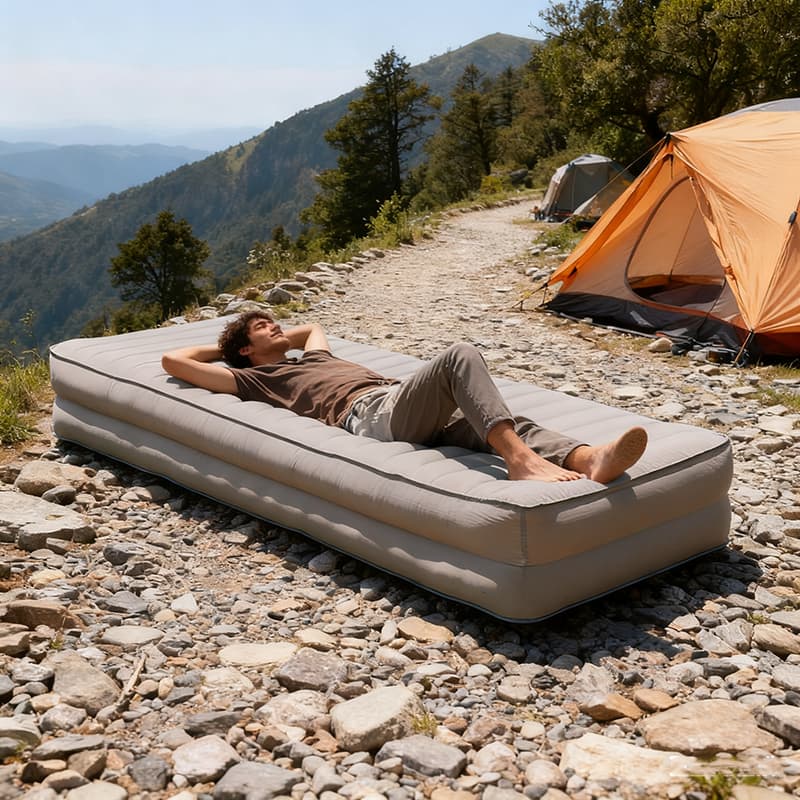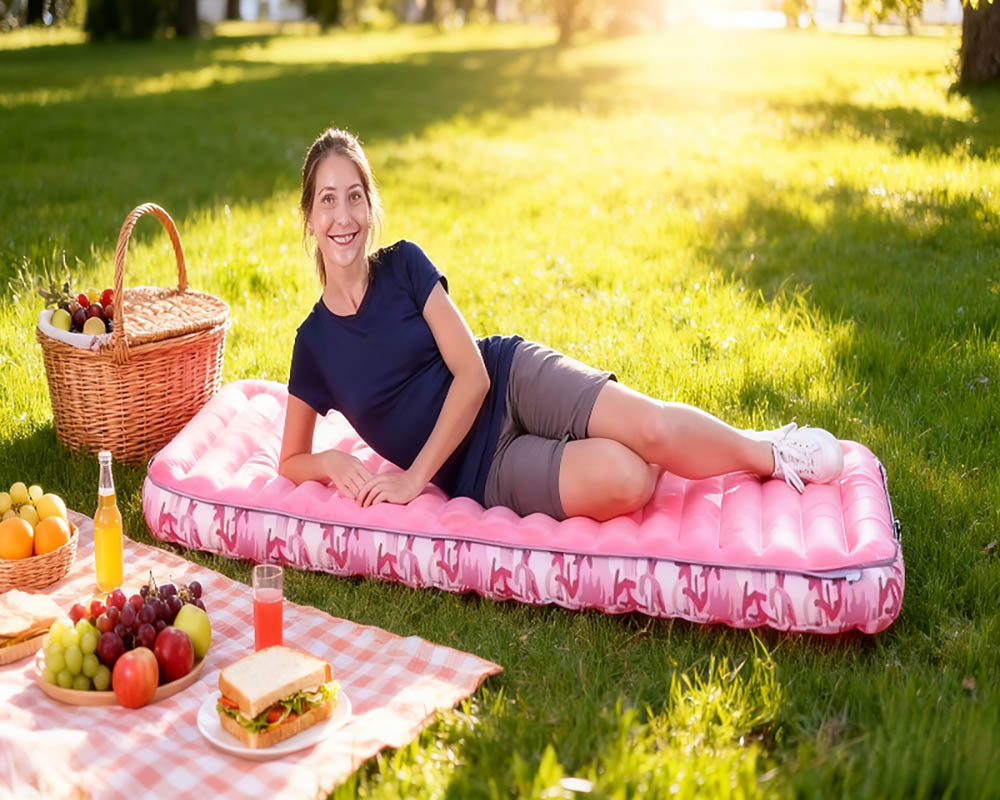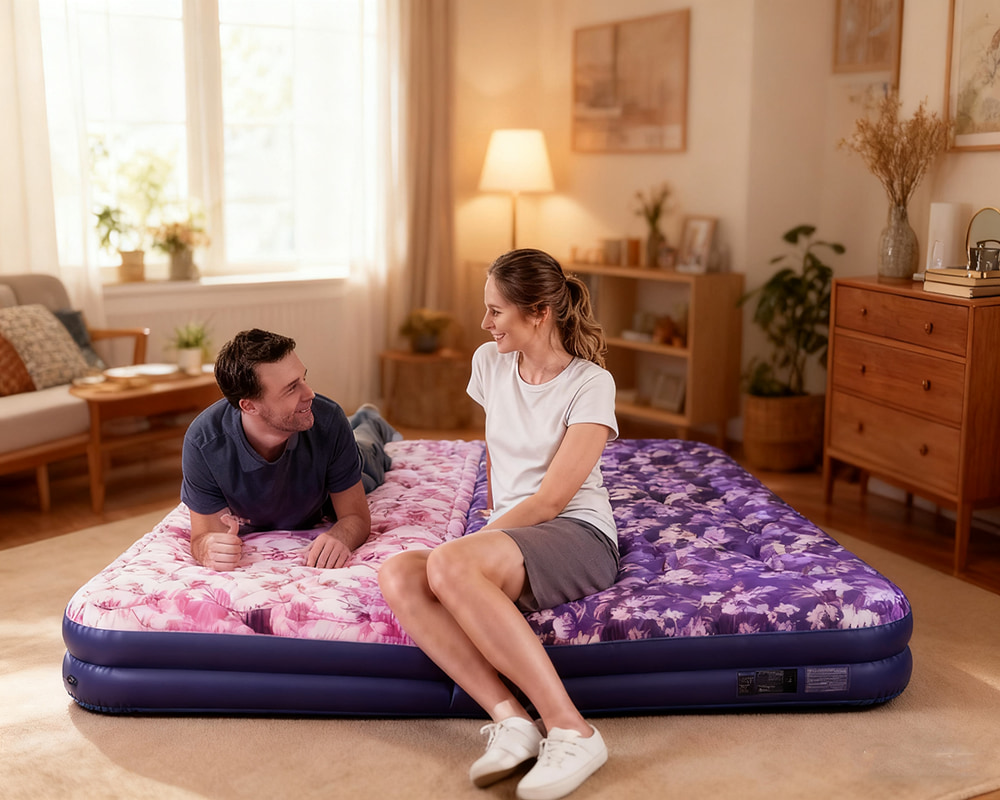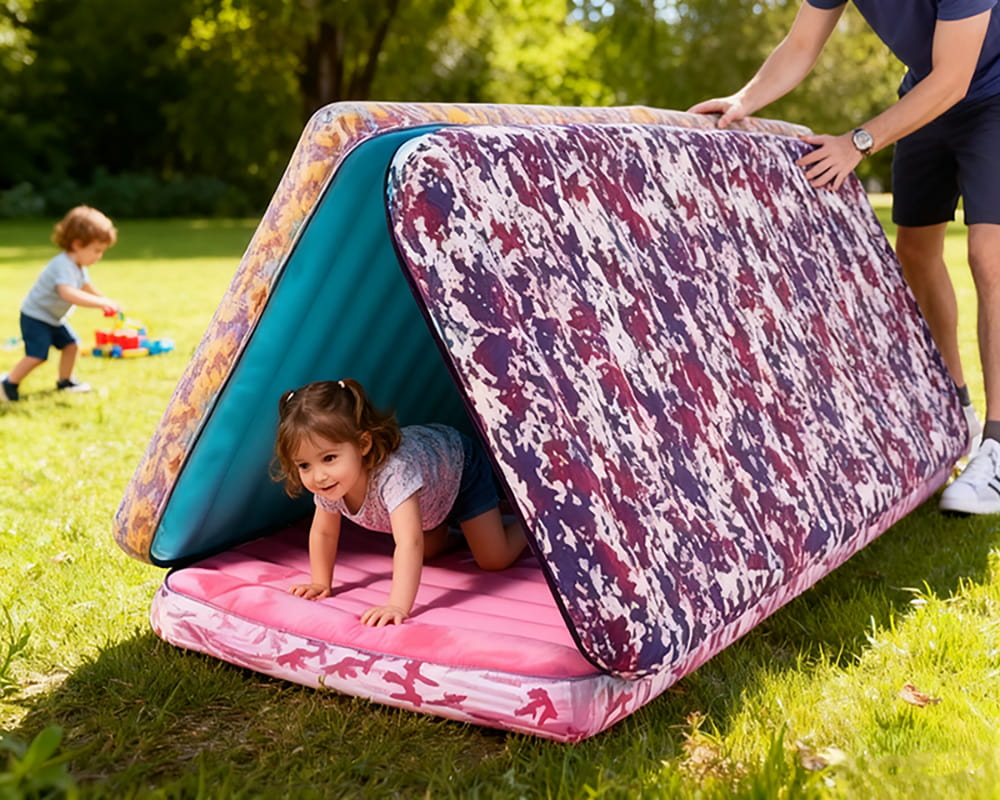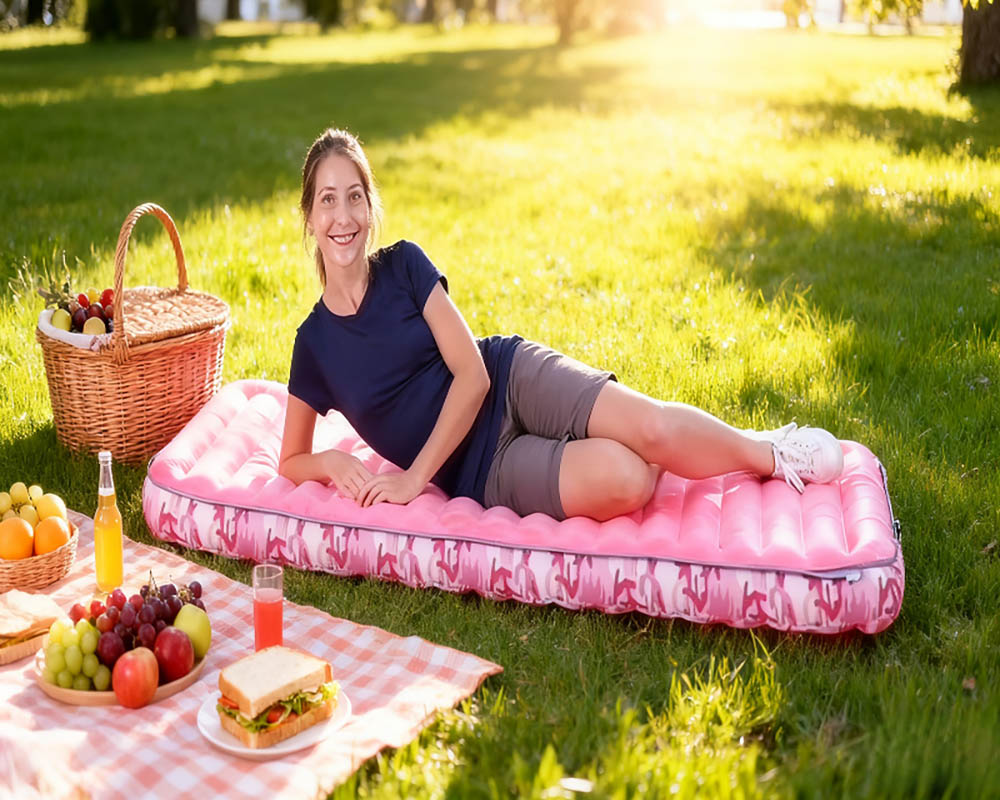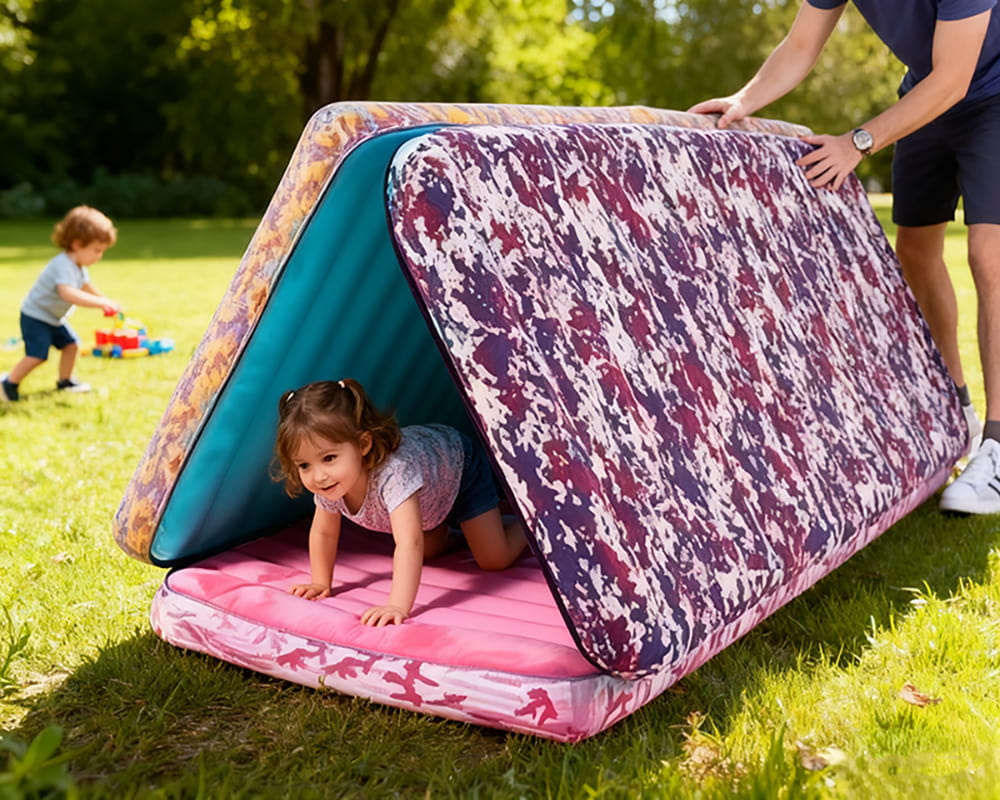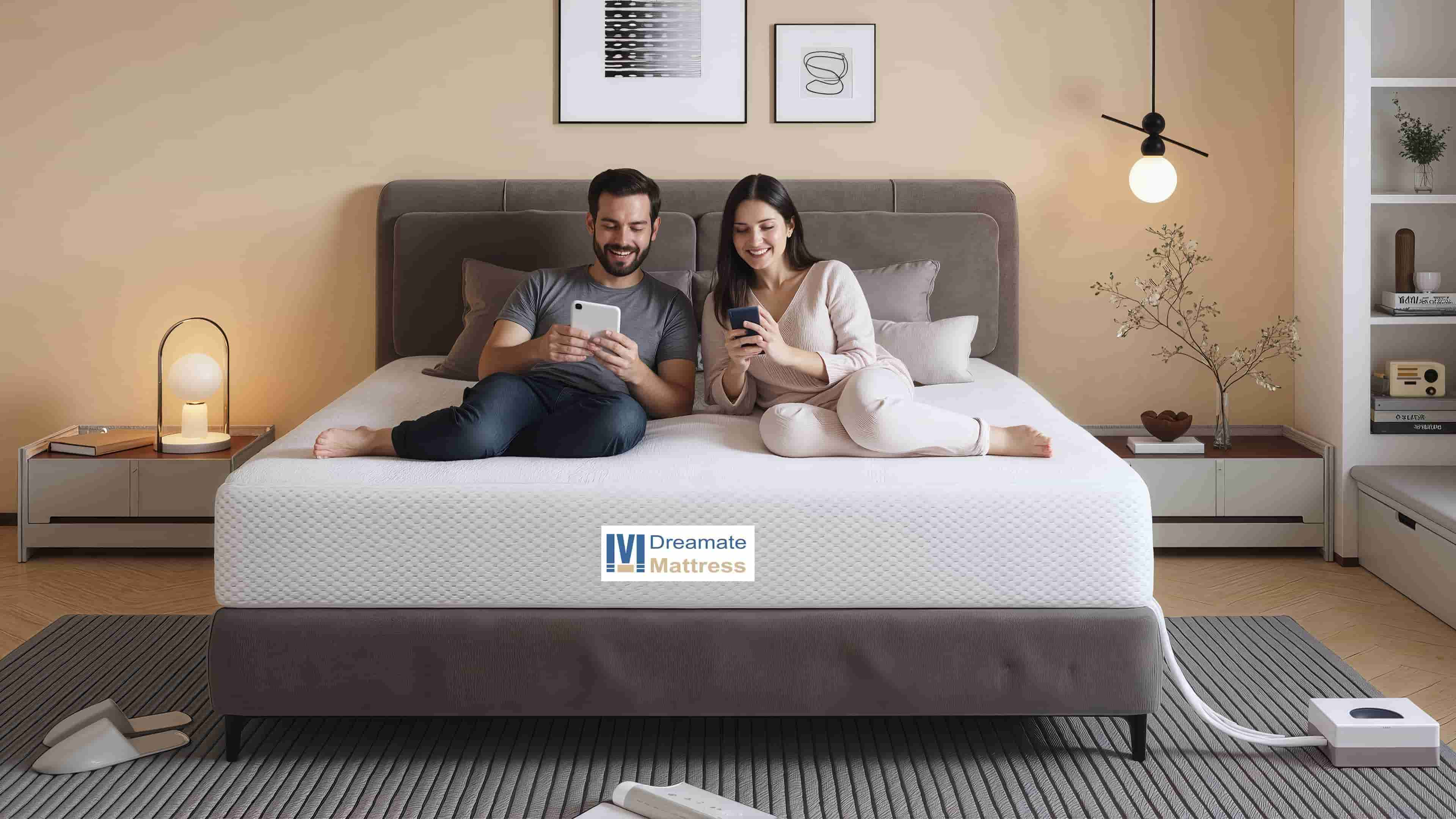Key Selection Points
Choosing a Mattress for autumn Hiking:Beyond Lightweight,Durability is the Hidden Must-Have
The "lightweight trend" in the 2025 camping market has been fully upgraded — according to data from iResearch, among 540 million outdoor enthusiasts, 93.2% pursue "traveling light", yet 62% of hikers complain that "lightweight mattresses turn yellow and crack after only six months of use". Autumn hiking scenarios place even higher demands on equipment durability:
- Gravel and dead branches in mountain forests easily scratch mattresses, and ordinary fabrics may wear out after just 3 hiking trips;
- Intense autumn sunlight combined with large day-night temperature differences cause poor-quality mattresses to age — their fabrics turn yellow and elasticity decreases — in as little as one month;
- Residues from morning dew or rain, if hard to clean, can also breed mold and shorten the mattress lifespan.
A mattress truly suitable for autumn hiking must balance three key features: lightweight design, strong support, and long-lasting durability. Anti-yellowing, anti-aging, wear resistance, and easy cleaning are precisely the core technical directions for the 2025 outdoor mattress industry to solve the "short lifespan" pain point — and these are exactly the core advantages of Dreamate outdoor mattresses.
Products Recommendation
2025 Autumn Hiking Bestsellers: 2 Dreamate Mattresses, Targeted Pain Point Solutions
1. Dreamate Lightweight Anti-Aging Self-Inflating Mattress (Rating: ★★★★★)
Core Pain Points Solved: Lightweight & No Burden + Durable & Sturdy + Comfortable Sleep
✅ Solves "Heavy Load & Difficult Storage": Weighs only 1.1kg (about the weight of 2 bottles of mineral water); when stored, it’s 14cm in diameter and 38cm long, fitting directly into a backpack’s side pocket without occupying main compartment space. No load pressure for one-day hikes or 2-day/1-night camping trips.
✅ Solves "Easily Damaged & Short-Lived": Resists yellowing under intense autumn sunlight (no traces after 300-hour sun exposure testing); withstands scratches from gravel and branches (field-tested to work well after over 100 hikes); morning dew and rain can be wiped clean instantly—no tedious cleaning needed.
✅ Solves "Uncomfortable Sleep & Poor Warmth": 5cm thickness + honeycomb partitioned support fully cushions the feeling of small ground stones, preventing back soreness after waking up; R-value of 2.9 suits autumn nighttime temperatures (10-15℃), eliminating the need for an extra moisture-proof pad to reduce load.
Suitable For: Solo hikers, autumn one-day light hiking enthusiasts, camping beginners (seeking "lightweight + durable + comfortable").
2. Dreamate Double-Person Wear-Resistant Inflatable Mattress (Rating: ★★★★☆)
Core Pain Points Solved: Lightweight for Two + Durable & Sturdy + High-Altitude Adaptability
✅ Solves "Bulky Double-Person Mattresses": Weighs only 1.7kg (30% lighter than ordinary double-person mattresses); when stored, it’s the size of a basketball, easy to carry in a backpack or car—no pressure for couple hiking or family autumn outings.
✅ Solves "Easily Damaged & Short-Lived": Resists tearing from gravel scratches; no water seepage at seams (safe even on damp autumn ground); maintains elasticity for 3 years; stains can be wiped clean instantly with a wet wipe, durable for complex outdoor environments.
✅ Solves "Uncomfortable Sleep & Poor Warmth at High Altitudes": 10cm heightened thickness ensures no disturbance when two people turn over (no midnight awakenings) and isolates ground cold; R-value of 3.0 suits autumn high-altitude hiking in areas like Western Sichuan and Yunnan (keeps warm even at nighttime temperatures of 5-10℃); resists yellowing under intense sunlight, maintaining a like-new appearance.
Suitable For: Couple hikers, double-person camping enthusiasts, family suburban autumn outings, people hiking at high altitudes in autumn.
Buying Guide
2025 Autumn Hiking Mattress Buying Guide: Choose by Pain Points, Never Go Wrong
-
Choose by "Load & Storage":For one-day hikes / short camping trips, pick mattresses ≤1.5kg (Dreamate Single Mattress: 1.1kg); for double-person trips, choose options ≤2kg (Dreamate Double Mattress: 1.7kg) to avoid exhaustion from heavy loads.
-
Choose by "Durability Needs":Prioritize mattresses that solve "no yellowing, scratch resistance, easy cleaning" issues. Dreamate directly addresses autumn sun exposure, gravel scratches, and rain residue problems—no frequent mattress replacements needed.
-
Choose by "Sleep Comfort & Warmth":For back soreness from uneven ground: Opt for "partitioned support + ≥5cm thickness" (both Dreamate models meet this standard);For high-altitude hiking: Select mattresses with R-value ≥3.0 (Dreamate Double Mattress);For plain-area hiking: Choose R-value 2.8-2.9 (Dreamate Single Mattress).
Usage Tips
- No Need for a Ground Cloth: Place it directly on gravel ground without fear of scratches. Skip one extra piece of gear to lighten your backpack.
- Don’t Over-Inflate: Inflate to 80% full (it should feel slightly elastic when pressed). This prevents back soreness and makes the mattress more durable (lasts over 3 years).
- Wipe Dry Before Storage: Clean off morning dew residue before putting it away. It won’t get moldy or yellow, so it’ll still be in great condition next time you use it.
You no longer have to worry about mattresses for autumn hiking – Dreamate directly solves the three major pain points: "heavy loads, easy damage, and poor sleep". Whether it’s solo light hiking or double-person high-altitude camping, you can set off light and enjoy the autumn mountains with peace of mind!
For more information about Dreamate mattresses, please visit our official website and consult the relevant staff.
